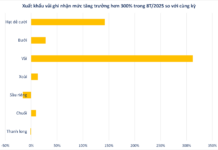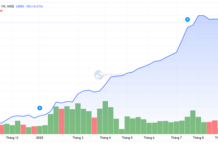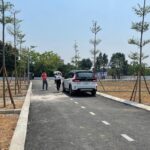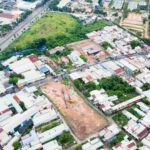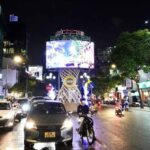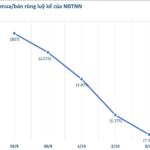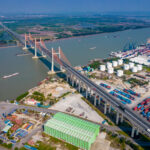Urban Expansion Outpaces Infrastructure Development
In an interview, independent critic architect Phạm Thanh Tùng stated that the prolonged heavy rainfall on September 29-30 left Hanoi nearly “paralyzed,” unable to cope. Daily activities were disrupted, and traffic came to a standstill as vast areas, from inner-city districts to Thang Long Avenue and Ring Roads 2 and 3, were submerged.
Just a month prior, in late August, Hanoi’s streets were flooded due to Typhoon No. 5.
Reflecting on the 2008 flood, Tùng noted that this recent flooding occurred amidst significantly increased urbanization, exposing Hanoi’s vulnerabilities more starkly.
“In 2008, Hanoi’s four inner districts covered about 250 km². Today, that figure exceeds 900 km², nearly quadrupling. Agricultural land, lakes, and ponds—once natural absorbers of rainwater—have been replaced by concrete, drastically reducing natural drainage capacity,” Tùng explained.
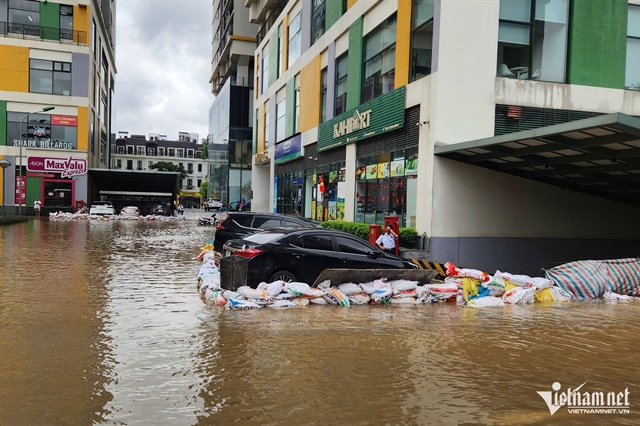 Diplomatic Corps Residential Area remains deeply flooded on October 2. Photo: Hồng Hải |
Tùng candidly observed that Hanoi has focused on expanding urban spaces and constructing high-rises while neglecting synchronized investment in drainage infrastructure.
“We’ve prioritized flashy, modern architecture but have inadequately invested in upgrading drainage systems, water storage, and pumping stations. The city’s drainage calculations are flawed, stemming from poor master planning,” he pointed out.
Hanoi still relies on a century-old sewer system built by the French, originally designed for a population of 250,000. Today, with millions of residents, the system is overwhelmed by domestic wastewater and rainwater, exacerbated by complex climate change.
“Upgrades haven’t kept pace with urbanization, leaving the city vulnerable to even moderate rainfall,” Tùng emphasized.
Natural lakes, vital for rainwater management, have been filled in, eliminating water storage capacity and further straining the already weak drainage system.
Beyond infrastructure shortcomings, Hanoi lacks a robust disaster response plan, leaving it reactive and unprepared.
Residents received little to no early warnings, facing sudden, extensive flooding. Many areas remained submerged for over 36 hours post-rainfall.
“In the digital age, Hanoi’s response and management skills have fallen short. Why weren’t city leaders on-site during the September 30 flood, as seen in other provinces? This warrants reflection,” Tùng remarked.
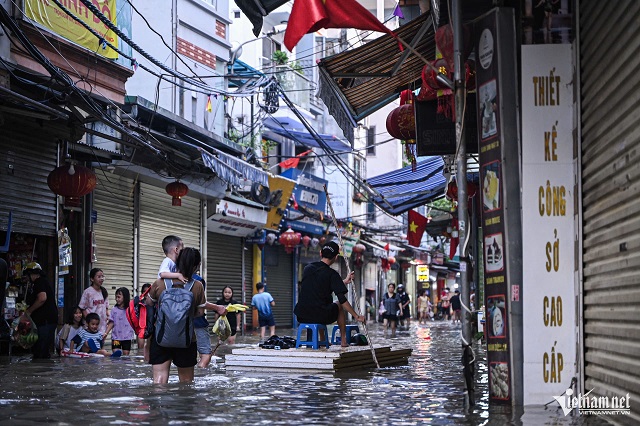
After 36 hours without electricity or clean water, residents of Phú Đô Ward’s Precinct 2 evacuated. Photo: Huy Nguyễn
|
Chaotic Ground Levels
Tùng highlighted the unchecked growth of urban areas along new roads. These developments often lack integration with the city’s broader drainage network.
Additionally, Hanoi lacks a unified ground-level map, leading to inconsistent planning and chaotic urban development.
Hanoi’s flooding is no longer an act of nature but a consequence of planning and governance failures. Remedies, according to Tùng, will be challenging and gradual. He urged the city to reassess all data for honest, transparent planning.
“This flood isn’t the last. With more storms expected, Hanoi risks recurring chaos without fundamental solutions,” he warned.
“We must prioritize definitive drainage infrastructure investments. Underground water reservoirs, common abroad, are essential for water security and flood control,” Tùng concluded.
Hồng Khanh
– 05:44 04/10/2025
Hòa Lạc Land Plots Surge with Metro News: Prices Inch Up, Still Outpaced by Đông Anh and Đan Phượng
Land prices in Hoa Lac have seen a slight increase following positive infrastructure developments. However, demand remains modest compared to the more vibrant markets of Dong Anh and Dan Phuong.
Becamex Group Proposes $6.7 Billion Bàu Bàng – Cái Mép Railway Line
Becamex has proposed to the Chairman of the Ho Chi Minh City People’s Committee, Nguyễn Văn Được, a logistics railway project connecting Bàu Bàng and Cái Mép, spanning a total length of 127 kilometers.

